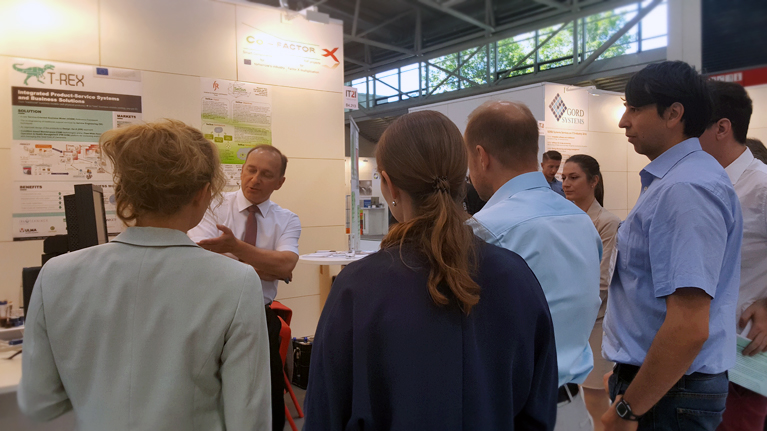Collaborative robotics for the industry at Automatica 2016
The participation of IK4-TEKNIKER at Automatica 2016, the 7th Trade Fair for Automation and Robotics in Munich.

Automatica 2016, the 7th International Trade Fair for Automation and Robotics, brought together the entire international industry in Munich (Germany) from June 21 - 24.
IK4-TEKNIKER participated with three stands featuring various demonstrators within the context of three European projects; collaborative robotics (FourByThree), industrial robotics (SMErobotics) and industrial maintenance based on data monitoring (Co-FACTOR).
Person-robot collaboration
In order to make progress in the construction of person-robot collaborative scenarios, the technology centre showcased a kit of components used to assemble a robotic arm specifically adapted to the needs of each user. This robot features tools that are used to develop modular, flexible, efficient and safe applications in industrial environments in collaboration with people.
Industrial robotics: Solutions for flexible automation
Industrial robotics has delivered reliability, cost reductions and accuracy in terms of production in many industries. But there are still certain kinds of production operations nowadays that require human intervention in certain stages due to their complexity or because of the high cost of automation. IK4-TEKNIKER showcased a bi-manipulation robot at the trade fair using integrated know-how such as 3D perception, sensorial integration (vision and power) or person detection when assembling aeronautical components.
Industrial maintenance and Industry 4.0
Finally, and at the Co-FACTOR stand, a cluster of projects related to “Smart Components”, IK4-TEKNIKER showcased a cyber physical system solution (a data logger and cloud data analysis system) used to monitor operation, status and alert parameters to upgrade operations, anticipate failures and increase availability; in short, the aim is to optimise the operation and maintenance of, in this particular instance, industrial transport systems. Solutions of this kind are indispensable for companies whose aim is to transition towards new ways of selling their goods based on renting and paying per use (T-REX).
